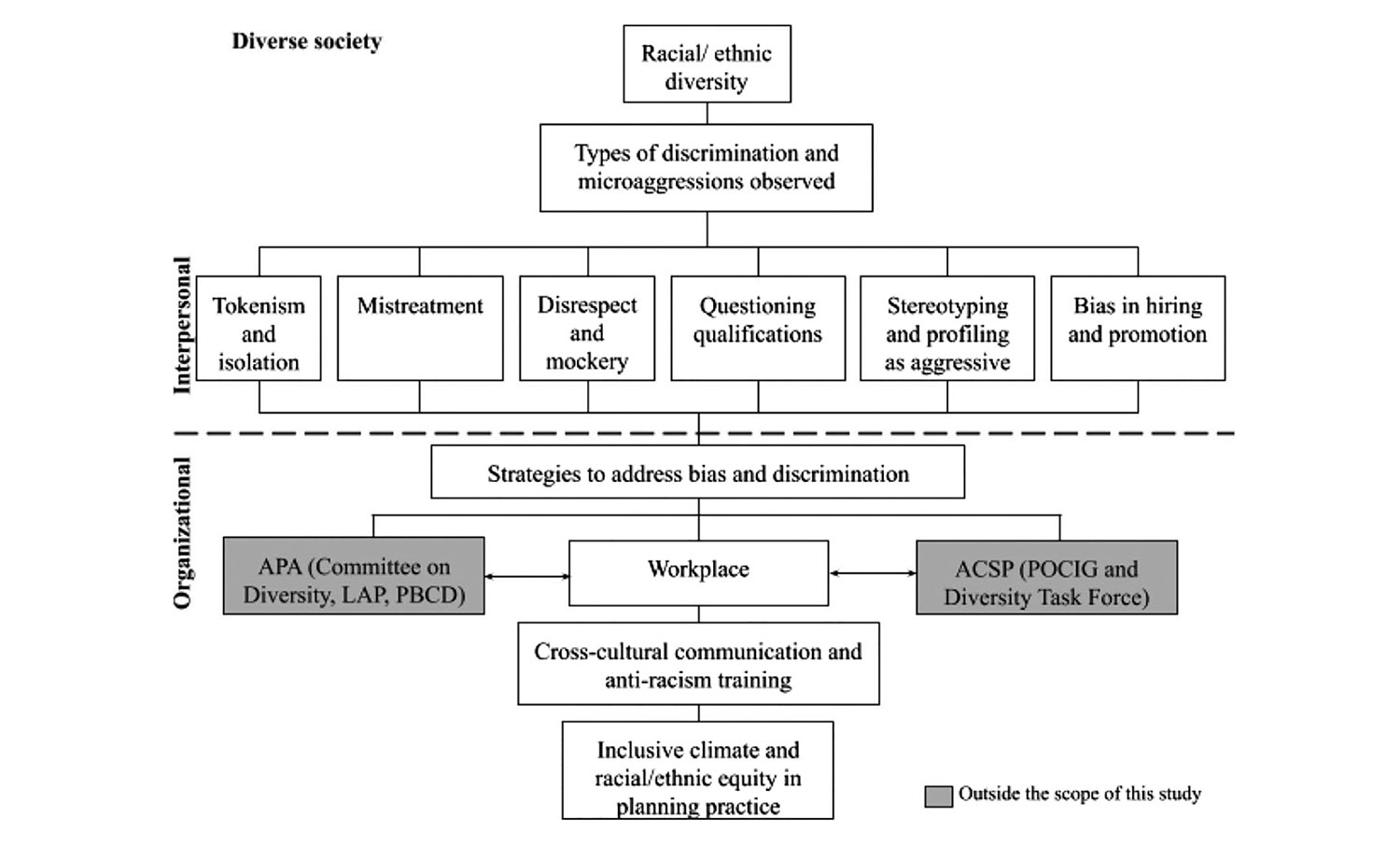Uncovering JAPA
Need for Diversity and Inclusivity in the Workplace

Planning is not a neutral practice. In issues of race and ethnicity, the planning profession continues to play a role in upholding discriminatory, exclusionary, and racist practices. As planners reconcile with the fact that African American/Black and Hispanic/Latin/o/a/x practitioners continue to be underrepresented in the workplace, it becomes increasingly important to examine how planning can effectively foster antiracist work environments.
Addressing Racism in Planning Workplaces Critically
In "Feeling Like an 'Odd Duck'" (Journal of the American Planning Association, Vol. 87, No. 3) authors Ivis García, AICP, April Jackson, Andrew J. Greenlee, Anaid Yerena, Benjamin Chrisinger, and C. Aujean Lee examine the work environment from the perspective of African American/Black and Hispanic/Latin/o/a/x planners. The authors develop a conceptual framework that helps identify and respond to biases in the workplace. Themes include tokenism and isolation; mistreatment; disrespect and mockery; questioning qualifications; stereotyping and profiling as aggressive; bias in hiring and promotion; and strategies to address bias and discrimination.

Figure 1: Conceptual framework.
Experiences of Bias in Planning Workplace
To develop these themes the authors surveyed 3,005 APA members and interviewed 24 African American/Black and Hispanic/Latin/o/a/x planners. The survey provided a comparative glance at perceptions of workplace environment from those who identify as African American/Black and Hispanic/Latin/o/a/x planners versus those of other identities. The authors found that personal experiences of bias or discrimination were often "related to aspects of age, citizenship or nationality, racial and ethnic identity, and sexual orientation."
The in-depth interviews provided specific reflections on workplace discrimination, which complemented the survey. Experiences highlighted how simply being in the workplace does not equate to African American/Black and Hispanic/Latin/o/a/x planners feeling included or validated in their roles. Beyond increasing diversity, workplaces need to focus on inclusivity and eliminating instances of discrimination and micro-aggressions. The authors suggest two ways to address this: cross-cultural communication and antiracism training.
These findings are important to the profession because they amplify the voice and prominence of present-day experiences faced by African American/Black and Hispanic/Latin/o/a/x planners. The authors point out that while their focus is on the workplace, the responsibility for inclusivity stems far beyond to include APA and the Association of Collegiate Schools of Planning (ACSP). For example, planning schools have a responsibility to deliver instruction to form the foundation for antiracist practices.
If the mission of APA is truly to "[create] great communities for all" then it starts with a hard look at the planning practice and workplace. García, Jackson, Greenlee, Yerena, Chrisinger, and Lee provide both qualitative and quantitative findings to support this necessary re-examination of practice.
Top Image: dragana991/iStock/Getty Images Plus/gettyimages.com.


